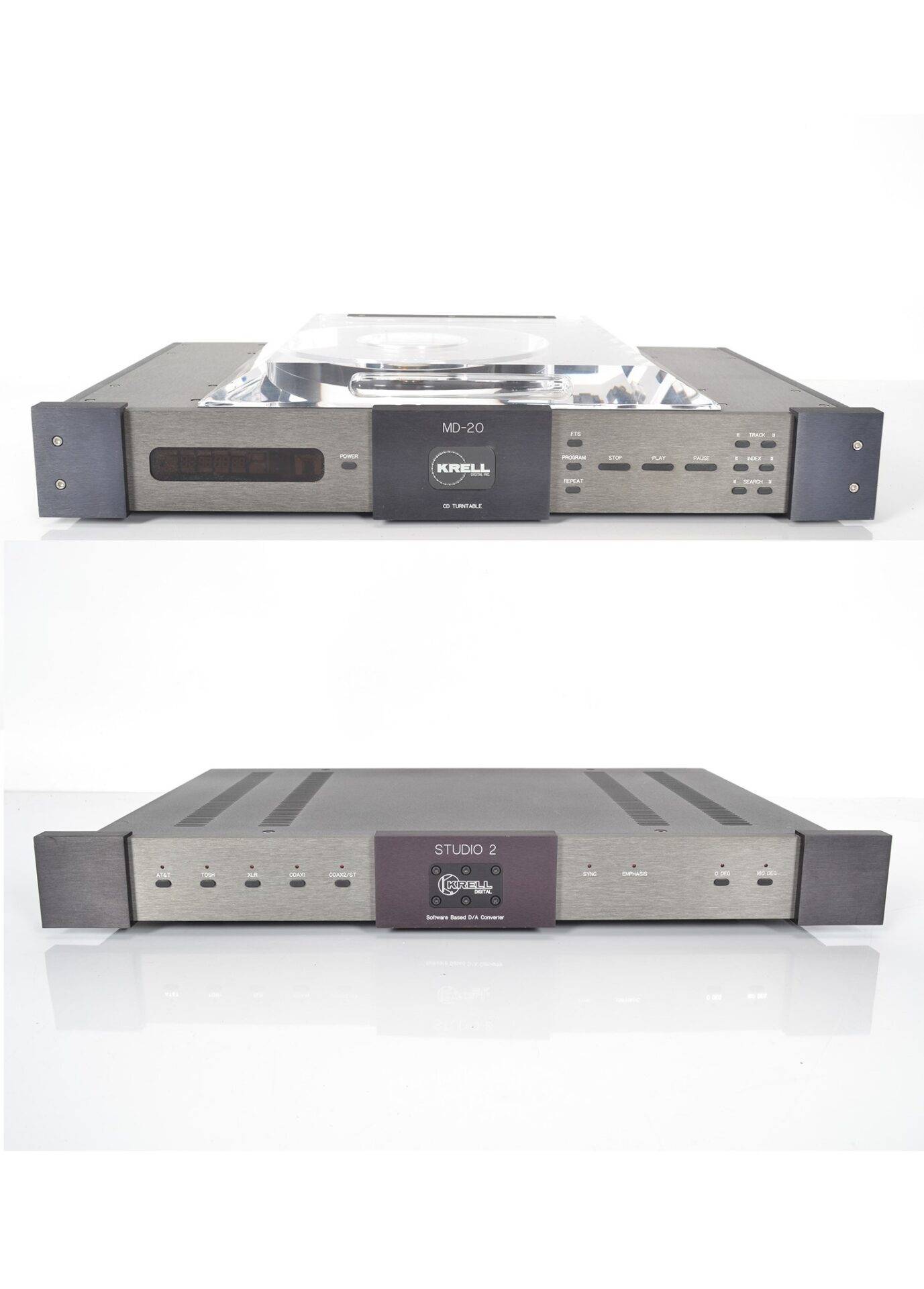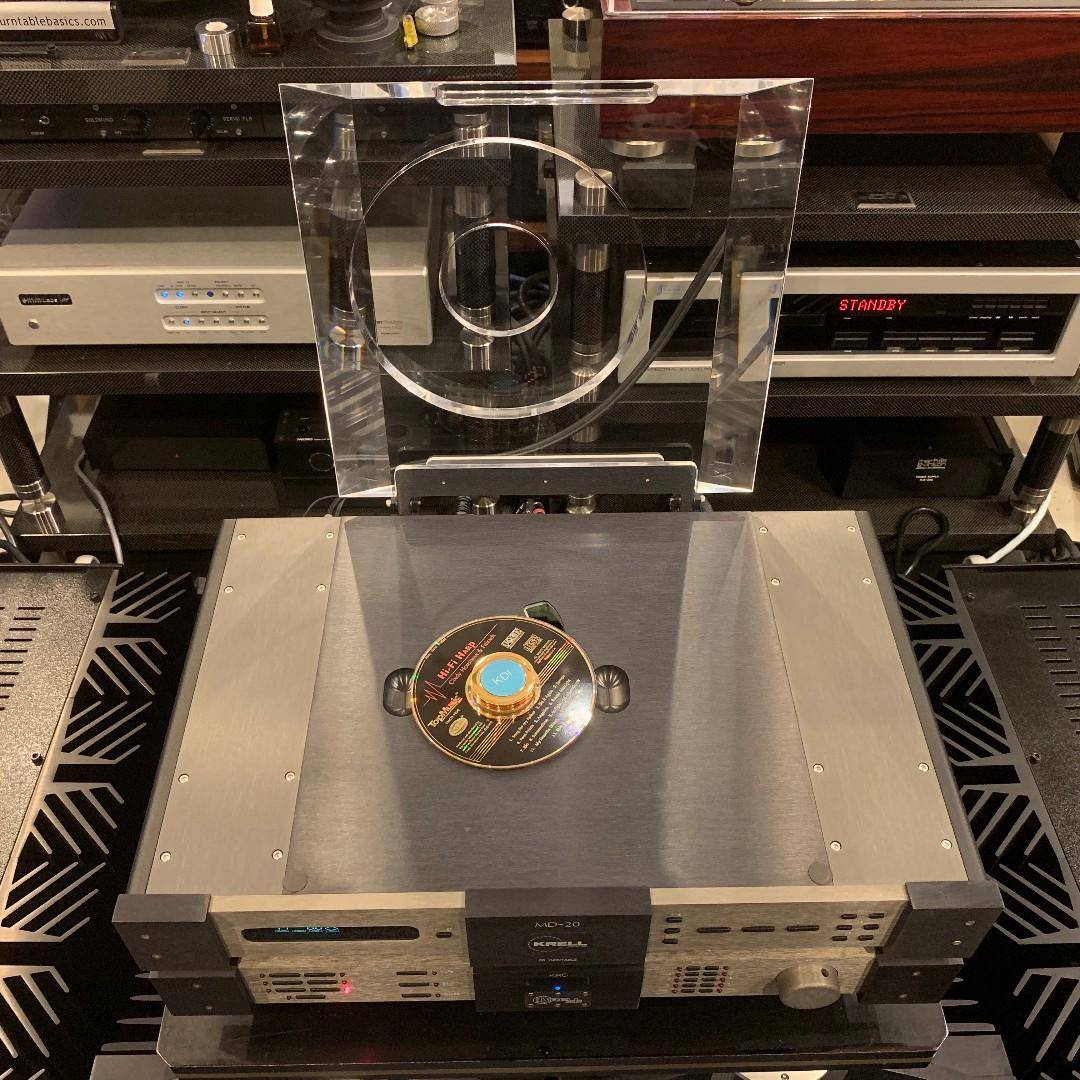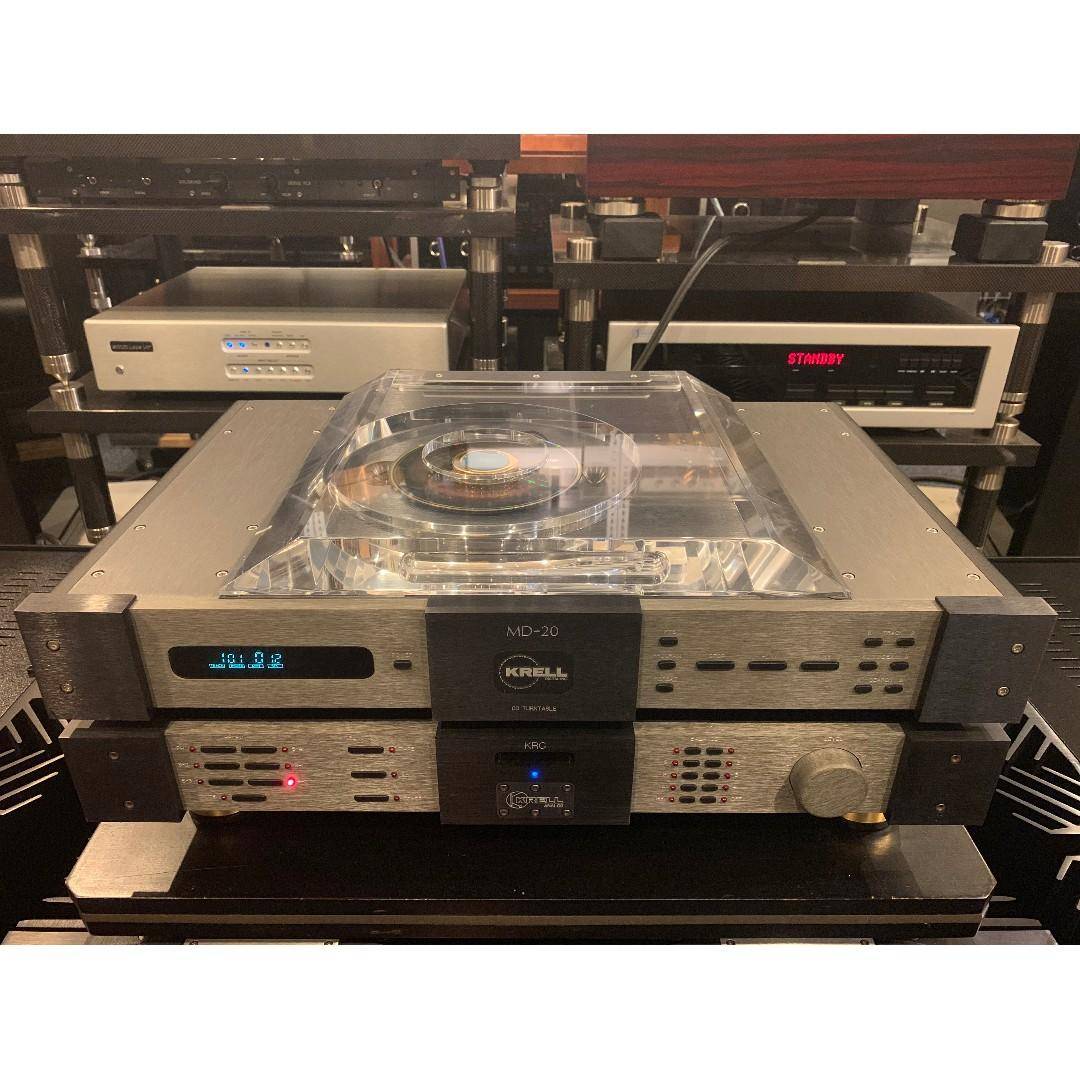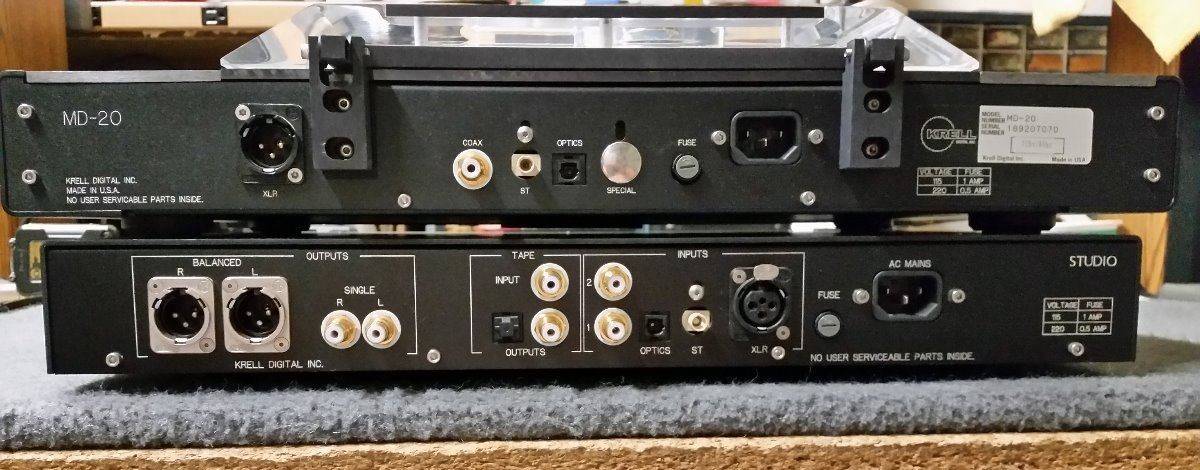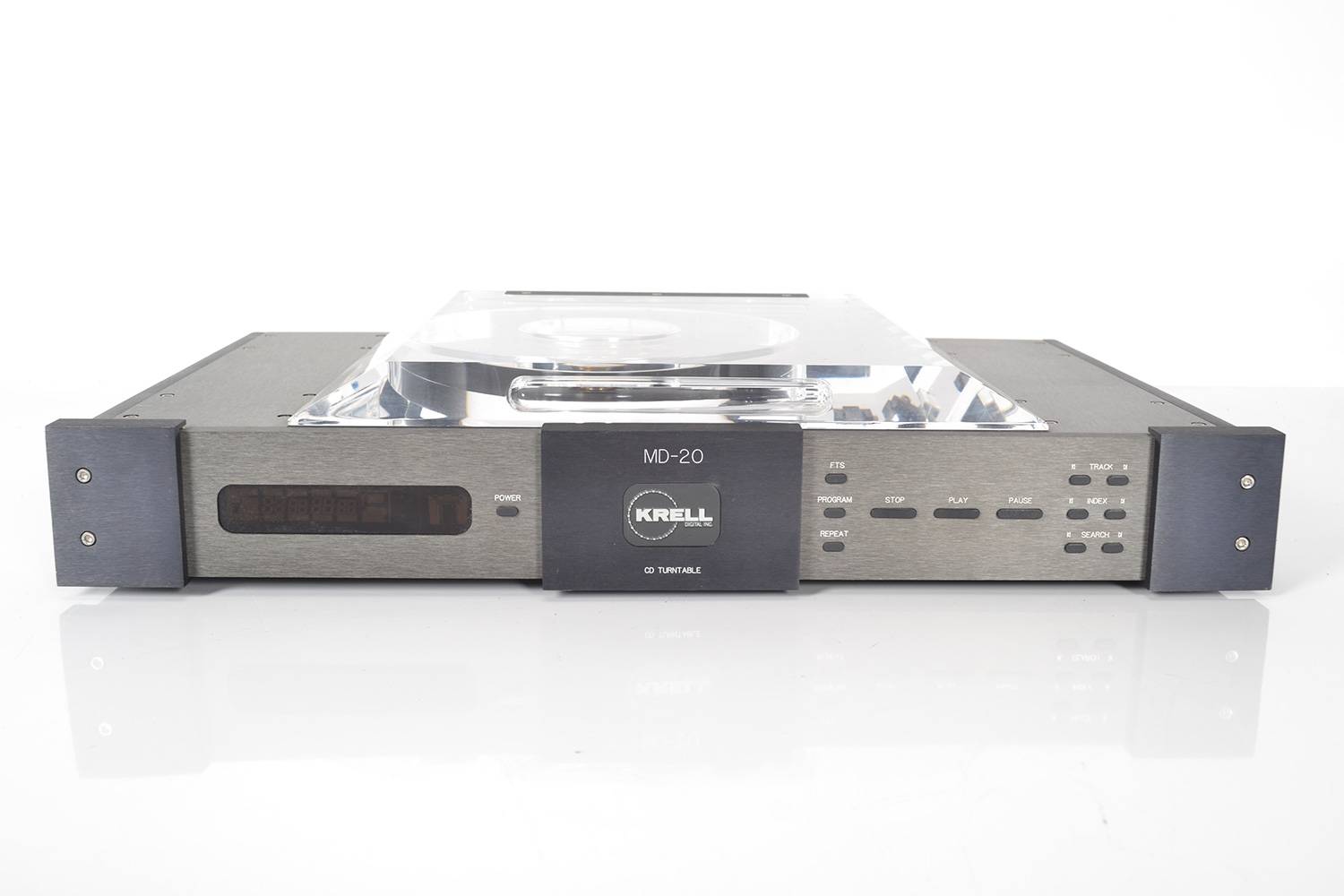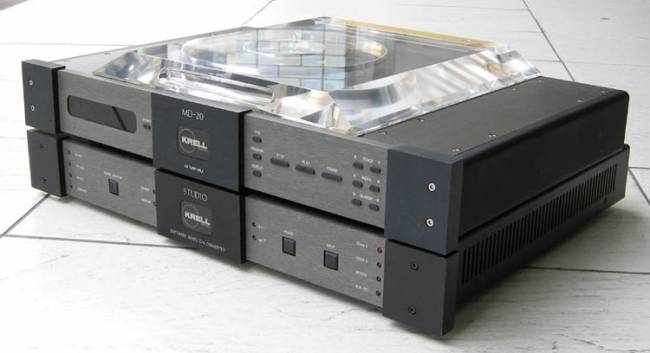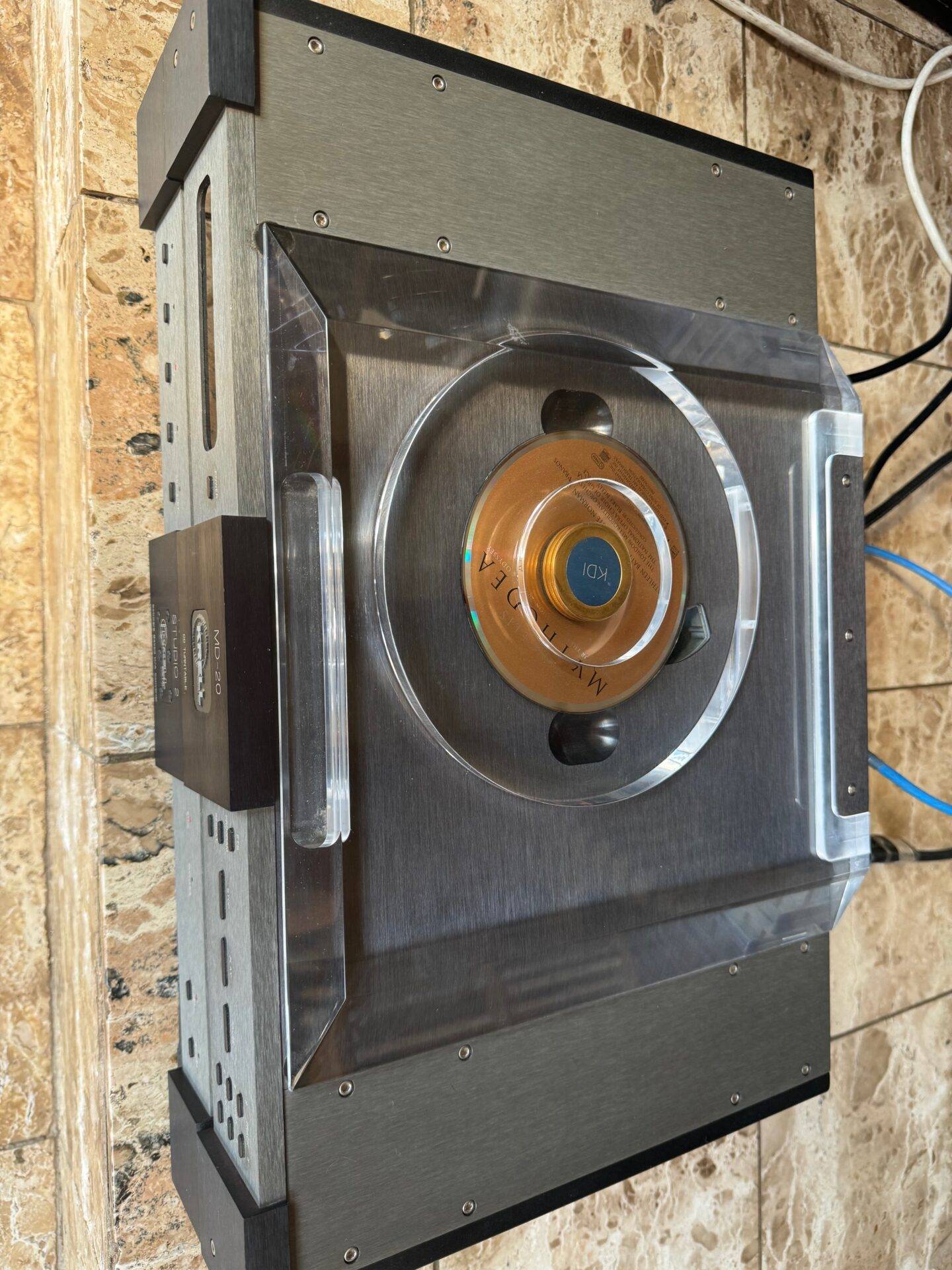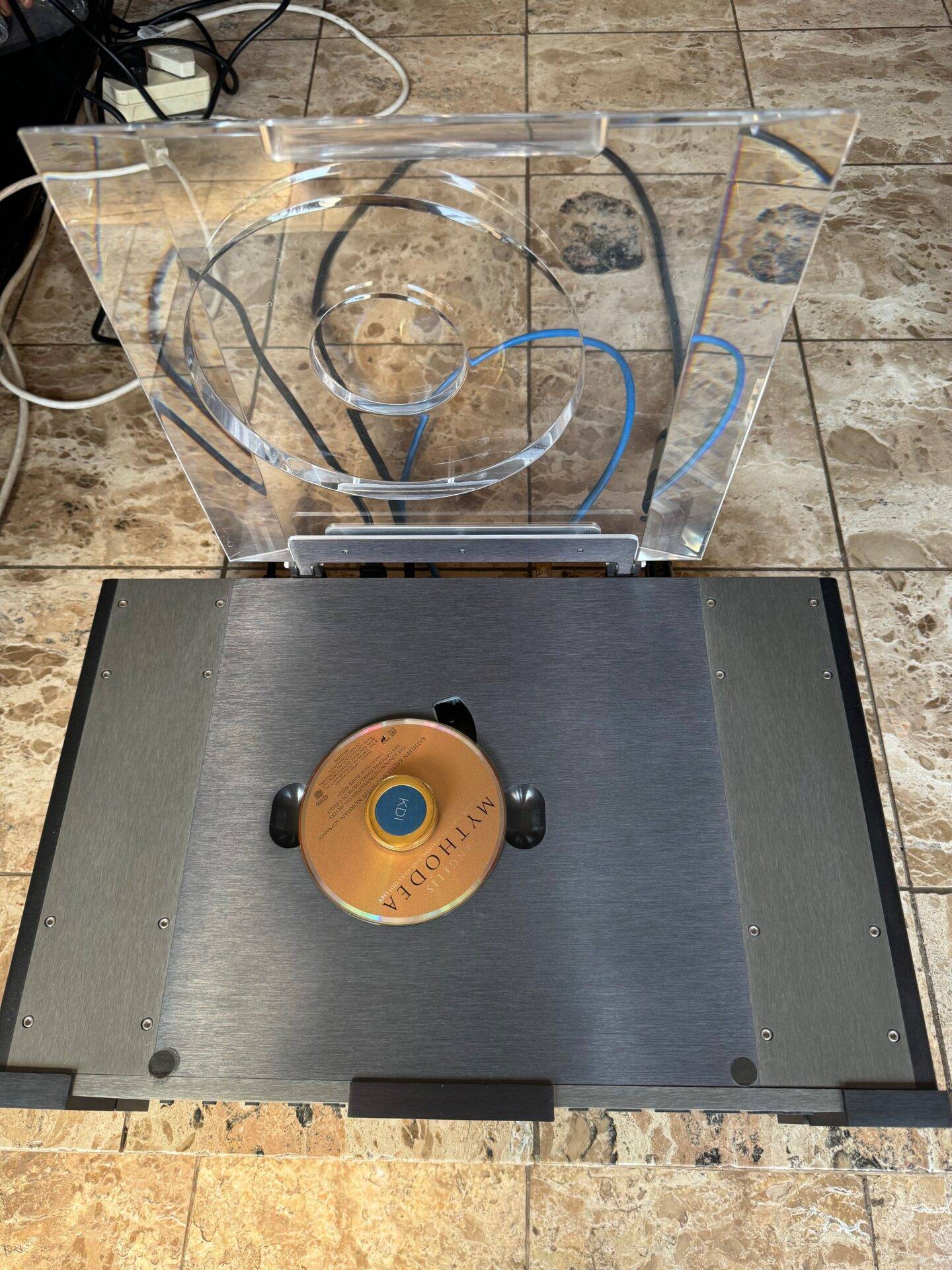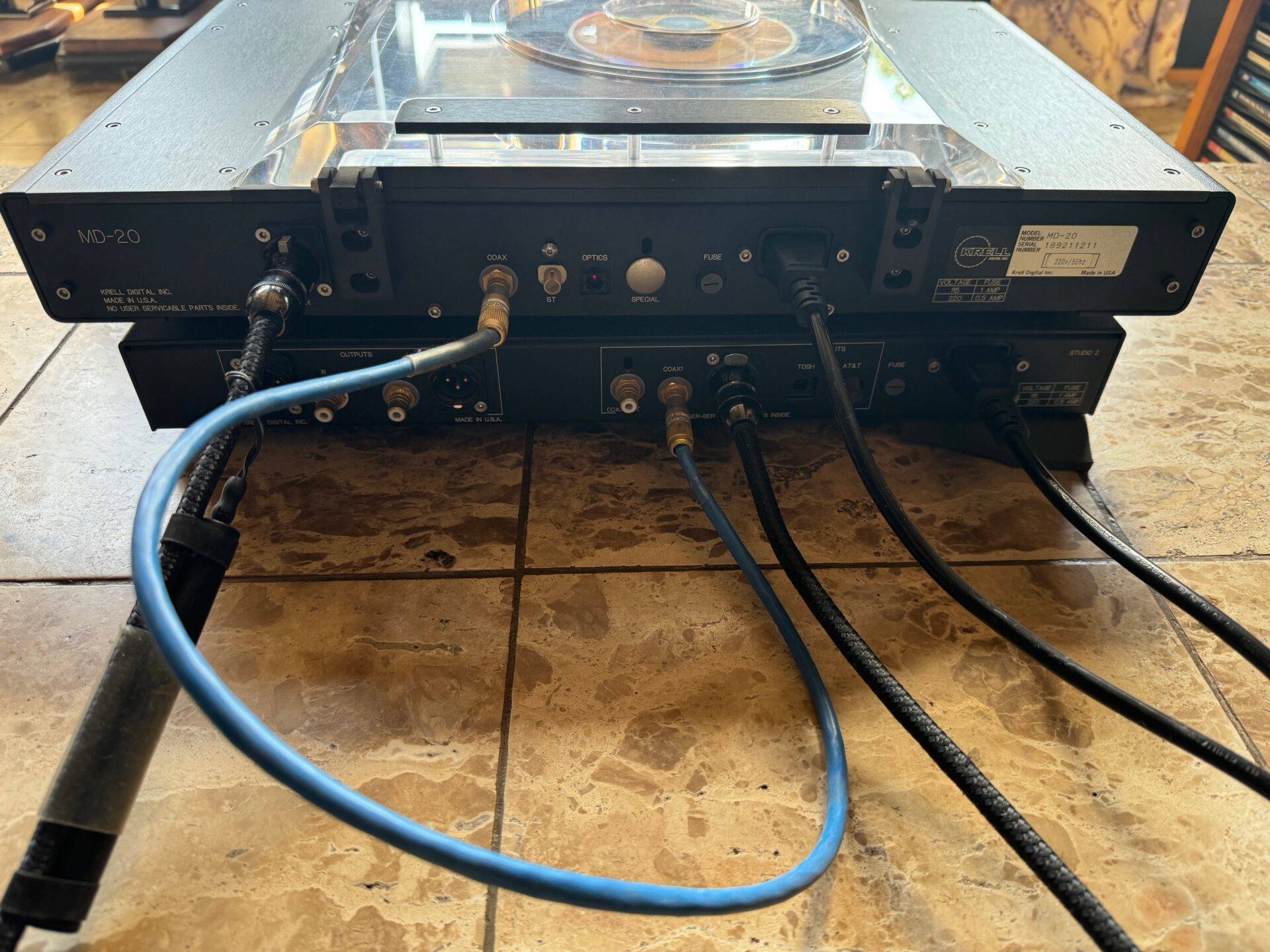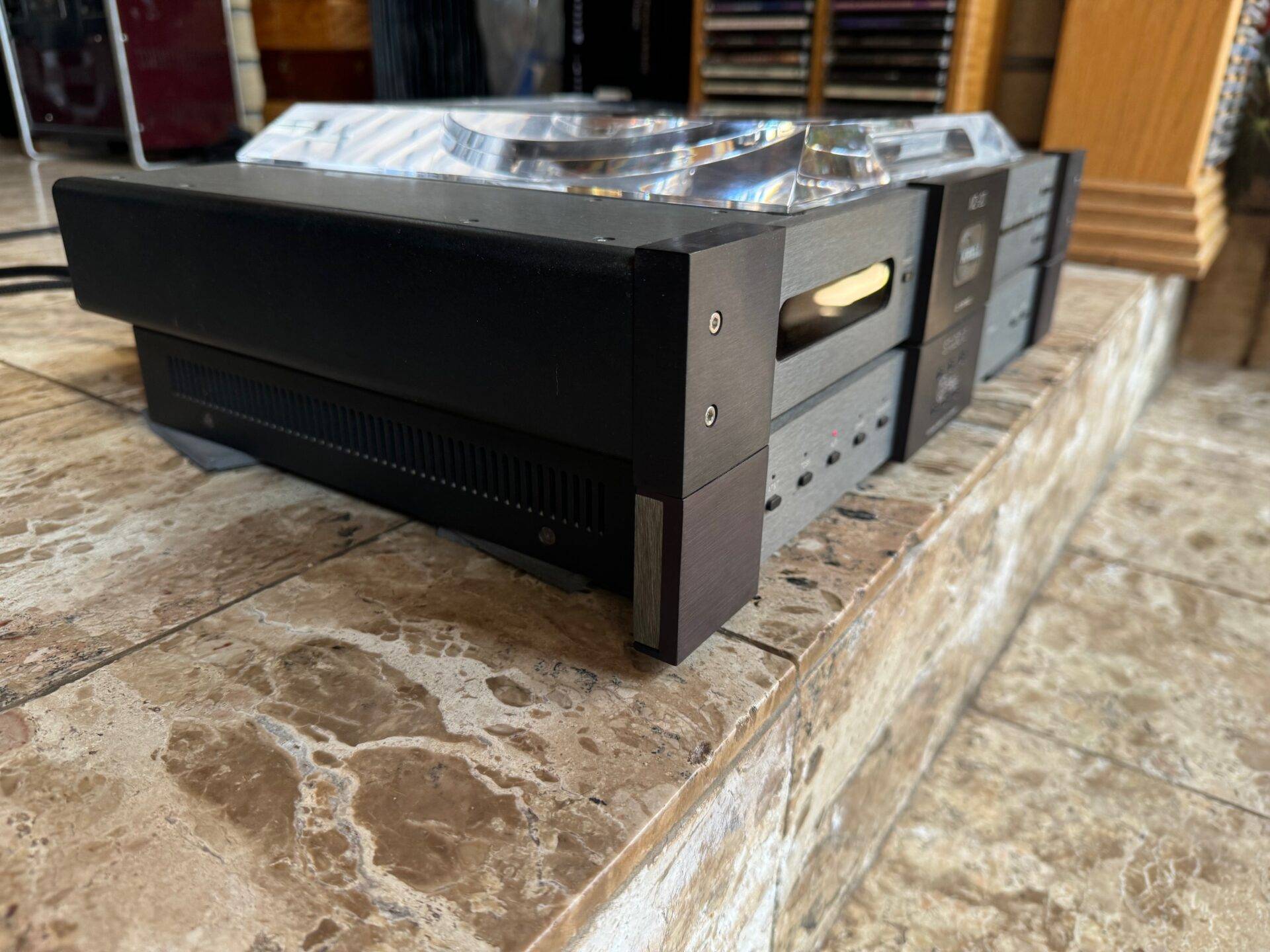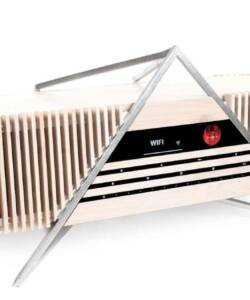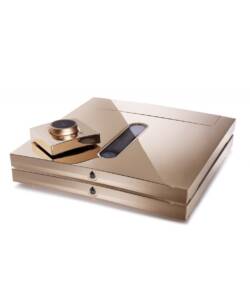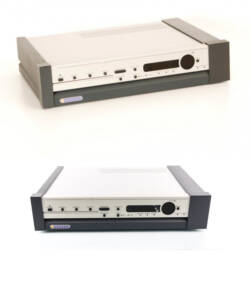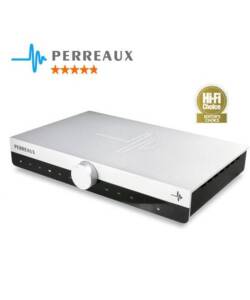Krell MD20 Transport and Studio 2 DAC (Amazing sound)
Original price was: R240,000.00.R50,000.00Current price is: R50,000.00.
What are the specs for the Krell MD 20?
- Transport:
- Philips CDM-1 mkII with Hall effect motor, swing arm design with uni-cast frame.
- Laser:
- Single Beam with glass lens
- Output:
- Digital only in industry standard SPDIF format, 1 FIBER OPTIC via standard interface, COAXIAL via RCA connector, AT&T via ST connector, AES/EBU via XLR connector
- Remote:
- Wireless Infrared
- Dimensions(w x d x h):
- 49 x 32.5 x 7cm
- Weight 8kg
-
- “The Krell MD-20 is built on a heavy unicast frame and fitted with a Hall-effect motor and swing-arm/glass lens laser assembly. This transport provides exceptional stability and read accuracy. The entire chassis is isolated from external vibration by an ingenious foot assembly with also provides leveling capability. The Krell MD-20 transport attacks jitter in 2 ways. Firstly, all active circuitry is built on a 4 layer circuit board, which is also used in the Top-Of-The-Line Krell MD-10 transport. The 4 layer board provides critical components with direct access to the supply and ground. Thus component placement problems inherent in 2 layer board layouts are eliminated. Secondly, the power supply is massive and tightly controlled. The transformer drivers seven individual supplies, which are double-regulated in all critical areas. This stable operating environment virutally eliminates jitter and data contamination from the MD-20 output. The Krell MD-20’s mission is identical to that of a printer – every bit of data must be read and transmitted accurately for the music to remain intact. The MD-20 is perfectly suited for the task. Image presentation is rendered vivid and transparent. Transient attacks are explosive, yet with the graceful ease of live music. Tonal balance is rich and convincing, without a trace of glare or hardness. Audition the MD-20 with a Krell Studio DAC and savor, for the first time, all the music.” – Krell
-
STUDIO 1 DACData sheet
- Height
- 60 mm
- Width
- 485 mm
- Depth
- 362 mm
- Weight
- 9 kg
- Out
- RCA + XLR
- Documentation
- Yes
- Original packaging
- Yes
- Product
- Used
- Operation
- Perfect
- Condition
- 9/10
- Original price
- 4000 €
Description
Krell MD-20 CD Transport, Krell Studio DAC and KRC Preamp Reviewed
Please note this one is the STUDIO 2 – much more advanced!
Remember what it was like the first time you rode a bike without the training wheels? Passed your driving test? Lost your virginity? No kidding: the first time you switch on an all-Krell system in your own listening room, no hard-sellers at your elbow, your most comfy chair, your favourite recording…hey, this is what hi-fi is all about, what you’ve worked at for years. It’s like a reward for all of those hours spent tweaking and fine-tuning and poring over hi-fi mags and scrimping and saving and pleading with your spouse.
Additional Resources
• Read more audiophile stereo preamp reviews from brands like Audio Research, Classé, Mark Levinson, Krell, Linn, Naim and dozens others.
• Follow AudiophileReview.com for blog posts and opinion on the world of audiophile preamps including passive preamps, solid state preamps, tube preamps and more.
• Read Audiophile Power amp reviews here.
A reward? How can you call something you pay for a reward? easy. It’s a reward for being a discerning individual with standards so high that only the best will do. Because what I’m about to say goes against my traditional fear of the word ‘best’, even with the qualifiers I’ll muster. force myself to This system is so, so special, so complete, so right that it undermines all you think you know about the replay of music in the home. But let’s start at the beginning.
It dawned on me and Editor harris that, in all my years as a reviewer, I’d only ever written aboheels? Pass out one Krell product, and a cartridge at that, despite having used the products as my reference. At the same time, it dawned on us that a new approach to hi-fi assessment is needed if we (the journalists) are to be fair to makers who produce all or most of a system. Quite rightly, a product will only perform of its best if matched with components known by the designer to provide an optimal match. In the case of Krell, the company produces a source (CD), a range of pre-amps and a host of power amps. We left it to Krell to put together the package, stating only that we wanted to review not the killer, top-end set-up nor the entry-level system. We wanted a middle-of-the-catalogue hi-fi representative of the Krell philosophy.
What Krell supplied is enough to charge the batteries of even the most jaded audio casualty. At the very front, the MD-20 CD Turntable (Krell-speak for ‘transport’), one from the top and selling for £4498, driving the Studio D/A converter, also one from the top and weighing in at £4231. This is fed into the KRC remote control pre-amp (£6380) and a brace of MDA-300 300W monoblocks (£10,710). The entire system is set up for balanced operation using Mandrake wire throughout, with the CD halves connected by AT&T and TOSlink optical and RCA coaxial, the latter accomplished with the latest NBS digital cable. Not wishing to start any pub-level arguments at this point, I’ll say only that the coax massacred the optics, while the optics massacred the music. And that’s confirmed by every visitor who heard the system.
The KRC pre-amp and the MDA-300s receive the full MC treatment on p??? in this issue, so I’ll limit my remarks to the listening. Starting with the source, the MD-20 is the latest incarnation of the now-familiar Krell top-loading system, with the puck which keeps the CD from turning into a scythe. (I only lost one CD due to failure to place the puck on the hub. It’s a lesson you need be taught only once.) Lift up the acrylic cover and there’s a curved slit holding the swing-arm laser and ending at the transport’s hub. The mechanism is the Philips CDM-1 Mk II, tried and tested and dependable. It’s fully programmable, supports the FTS storage system for fave tracks, and is operable from a remote controller which adds numerical track entry to the basic functions on the fascia.
This player, by the way, sports the new look of Krell and Krell Digital uppper-level components. The light grey fascia is accented by black end sections and a black centre strip containing the logo. The lefthand section holds the on-off button and the read-out window for track and time information, while the right side contains the transport buttons covering every standard function bar the aforementioned numeric track entry. The look is simply sensational, clean and ‘architectural’. When stacked on top of the matching pre-amp and D/A converter, the look is almost menacing.
Inside, the MD-20 betters the first-generation transports with new circuitry including an improved servo control, four-layer glass-epoxy circuit boards with better earthing for less noise and greater efficiency, and the option of TimeSync transport/processor sychronization which uses a second AT&T link to sychroniza all data and DAC clocks for the elimination of jitter-induced degradation. This wasn’t fitted to the review sample, yet I can’t imagine what gains it would provide a transport which strikes me as close to perfect.
Outputs on the review sample include the three types listed above, with AES/EBU (XLR) balanced output an optional extra. The transport rests on adjustable feet, but I used the Harmonix
Tuning Feet because I’m now paranoid about their absence.
In operation, the MD-20 is a gem, once you get into the habit of using the puck. It becomes doubly important after you learn that the MD-20 generates enough heat to make the puck stick to the disc. I decided to operate it with the lid in the up position, which means that — should I ever forget to use the puck again — the disco volante will provide me with a free appendectomy.
The Studio, like the MD-20 has the black-grey-black-grey-black front panel, with vertical rows of red LEDs at the edges. the left row indicates sampling frequency and emphasis, locking when the DAC receives a signal. The right row indicates which of the four inputs (AT&T, TOSlink, RCA coax, AES/EBU) you’ve selected. Inbetween are a source/monitor switch and LED indicators — the Studio will feed a digital tape deck — phase inversion selector with LED confirmation, and a button to select the inputs. The selection process is one which scrolls from 1-4. Socketry at the back is provided for all four types of digital input, single-ended and balanced analogue output and optical or coaxial tape output.
Inside, it’s like enrolling at a military academy. Everything is so neat and tidy that you assume Dan D’Agostino is a Virgo with Virgo ascending. Krell wrote the software for the logic chips which control data recovery and clock synchronization. Two Motorola DSP-56001 chips are used, one per channel, producing a full 24-bit digital word for the DACs; user-replaceable EEPROMs contain the software, so upgrades to accommodate future algorithms won’t require returning the unit to the factory.
Each channel uses two 20-bit DACs operated in push-pull configuration. With 24-bit input through 20-bit DACs the detail resolution is improved substantially. The push-pull configuration eliminates zero-crossing distortion.
The DACs’ output is connected directly to the analogue output stages; there are no capacitors in the signal path and servo amplifiers ensure that no DC reaches the main outputs. The analogue section employs output amplifiers based on those used in Krell pre-amps: high bias, complementary Class A designs.
As you’d expect, instant synergy was achieved. I had the system up and running in under an hour, but the real listening didn’t commence for another day; these products do benefit from a long burn-in period and require an hour or two from switch on even after they’ve settled in for the duration. The best advice is to leave the KRC pre-amp, Studio and MD-20 on at all times, though you may balk at filling the coffers of your local electricity board by leaving the MDA-300s idling…at 400W.
I said this was a system review, but that doesn’t account for the speakers, of which there are none bearing a Krell badge. Instead, I opted for two which I know won’t result in a stiff letter on Krell stationery: Apogee Divas and Sonus Faber Extremas. Both are critical, hungry loads which will test the MDA-300’s grunt, and both are speakers with which I’m intimately familiar. I connected them to the Krell chain with NBS cables.
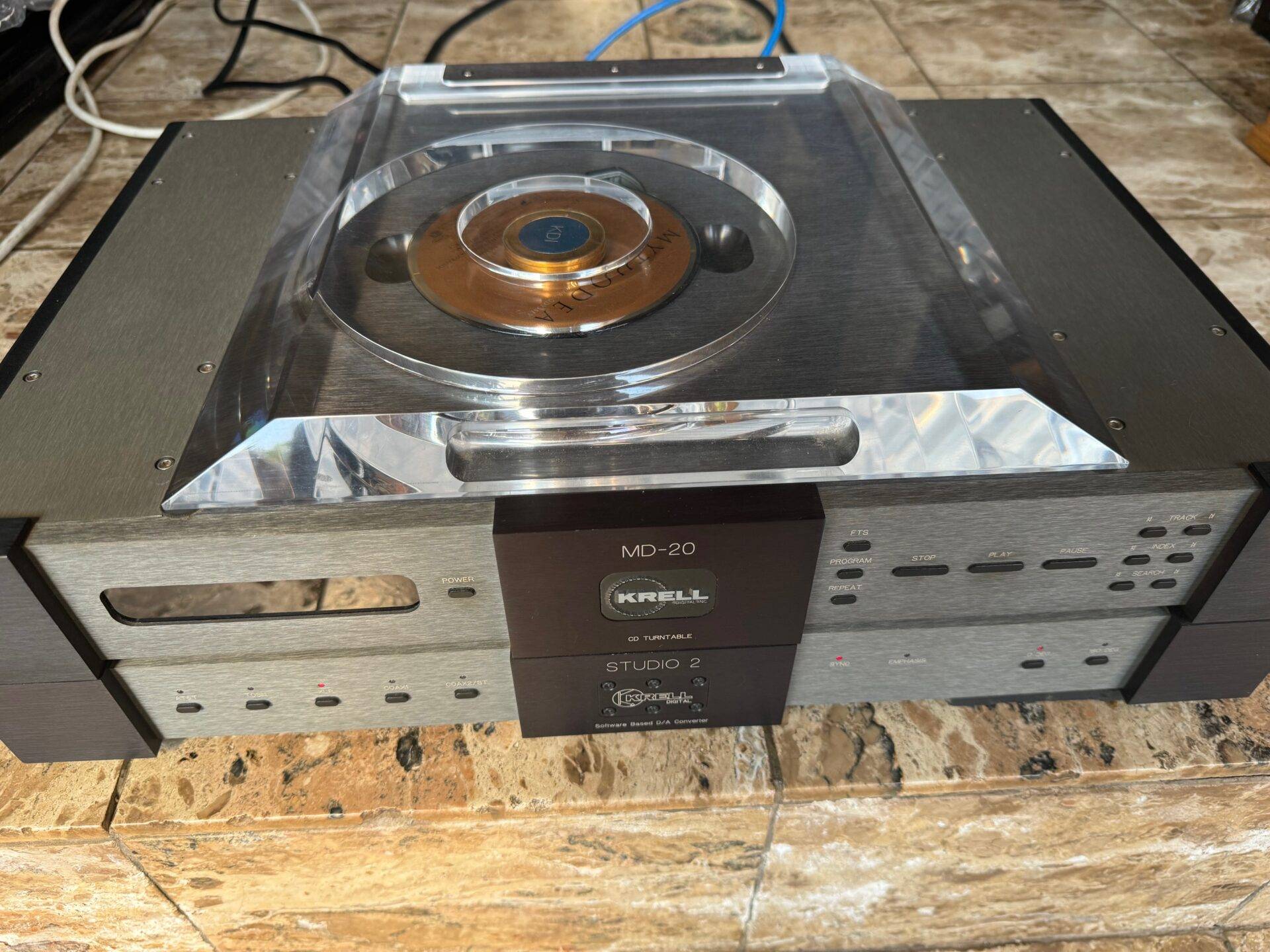
Krell
The pre-amp is the easiest piece to describe. It simply disappears, imposing little of itself on the signal. The functions and switching work flawlessly, and nice touches like a morotised volume control which parks itself at silence make you wonder why the high-end has denied itself such luxuries for so long.
Mixing it with other products or using it as God and Dan intended, the KRC, even more so than the power amplifiers, shows just what true balanced operation can do for sound quality. Even with the short runs used in my system (the maximum cable length is 3m for the pre-to-power connections), the system sounded quieter in balanced mode; in single-ended mode it’s hardly what you’d call loquacious. I also used it for a direct feed to the Stax Lambda Pro headphones with the SRM-X energizer, to separate its contribution from the power amplifier. Yes, kiddies, this pre-amp is undeniably the Krell flagship.
Krell, though, is best known for its amplification, and the MDA-300 is classic Krell with bells. The easy access to unbridled power, the sheer grip that the amplifier has on the music, the control it imparts over the speakers — to these we can add something at which earlier Krells hinted. Beyond any doubt, the MDA-300s deliver the finest, most convincing, most realistic lower registers I’ve ever heard in my system.
As for the MD-20/Studio combination — is it too early to say, “CD, Come on Down!”? Along with such rare wonders as the Vimak DS1800, the CAL Tempest IISE, the current Thetas, this Krell pairing proves that CD can serve as the source for a no-compromise system. I defy any critic of digital playback to grimace in front of this set-up. To do so would be self-abnegation above and beyond the call of music.
But enough blow-by-blow dissection. Put it all together and the whole is…logarithmically greater than the sum of the parts. If ever a company proved that the system approach is the way to go, Krell has done it. Neither Linn nor Naim ever convinced me, during their years of promoting the system approach, because, although their stuff worked best ‘approved conditions’, their idea of best was not mine. With this system, we reach a point where it’s safe to say ‘Look no further’.
The Krell Sensation is that of no-holds-barred dynamics, ‘See Me, Touch Me, Feel Me’ imaging, utterly consistent tonal balance, convincing weight and, above all, a sense of scale so life-like that you will do double-takes more often than with any other combination. No system yet has done a better job at making the speakers in my room seem to disappear. No system has retrieved more detail, however miniscule, from my cherished recordings. No system has made me more inclined to just sit back and smell the roses.
This is not mere hi-fi. However much the Krell/Apogee Grand display in Chicago shuffled my brain cells, it was still an unfamiliar system in an unfamiliar room. This set-up was operating on my turf, to my requirements, with my chosen material. And it surpassed any expectations, any imaginings during the lead-up to the listening sessions. Given the twnety-five big ones necessary for the Krell components (to say nothing of the speakers), I’d have to say that Patek Philippe or Mercedes-Benz would be losing a sale to Kessler.
